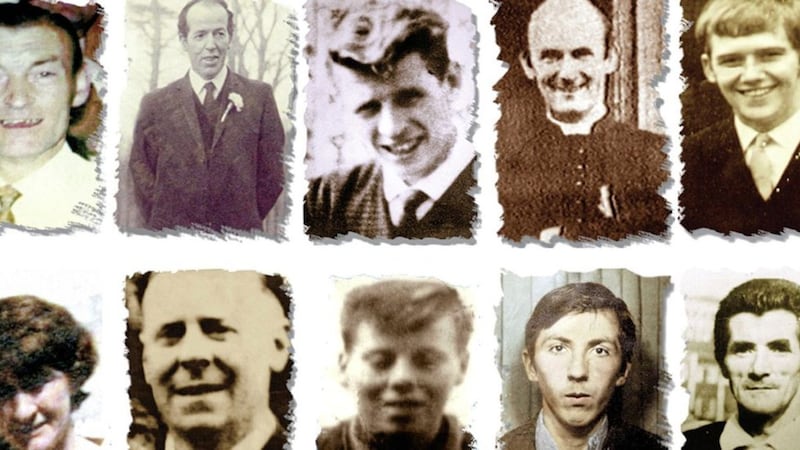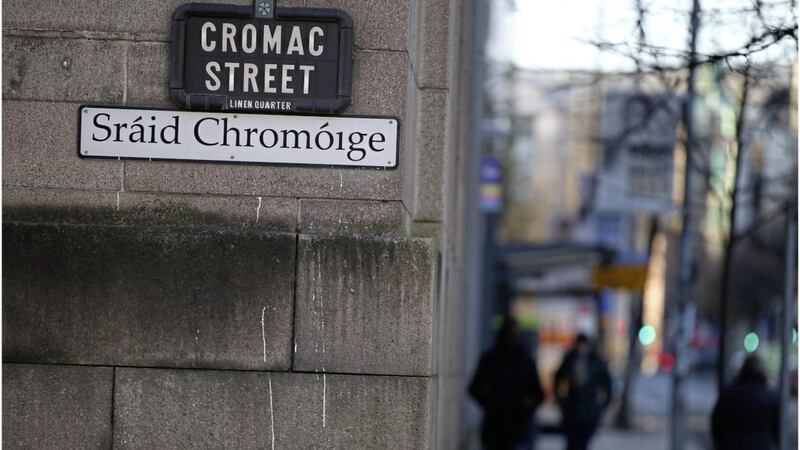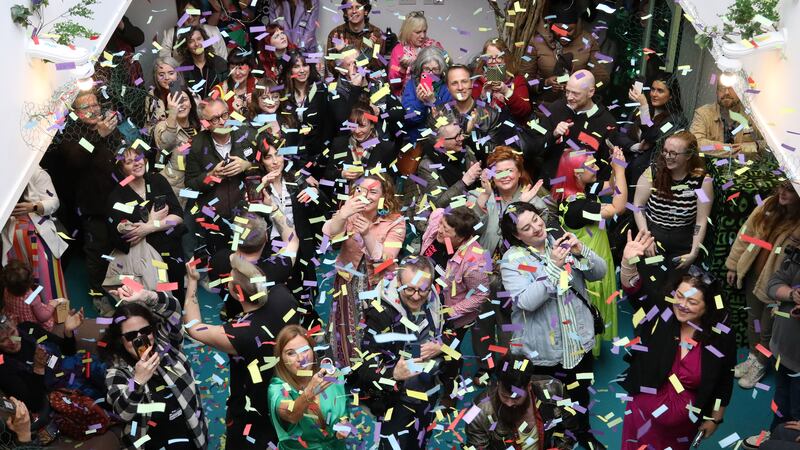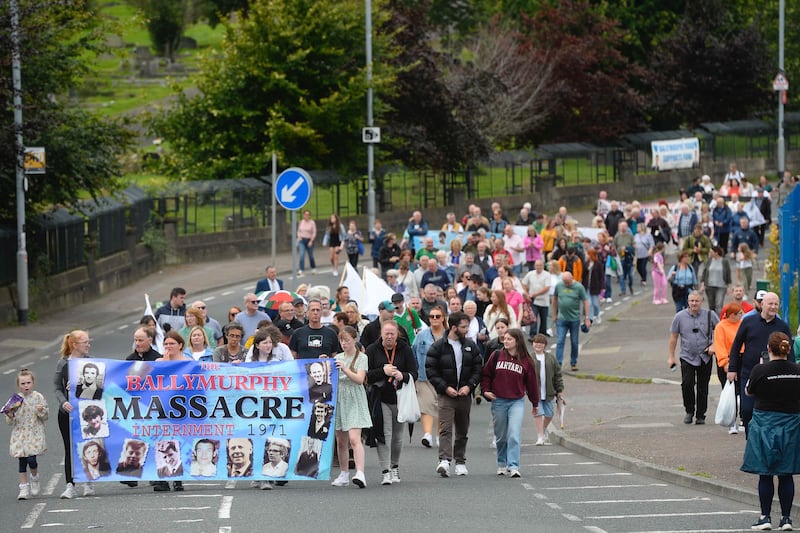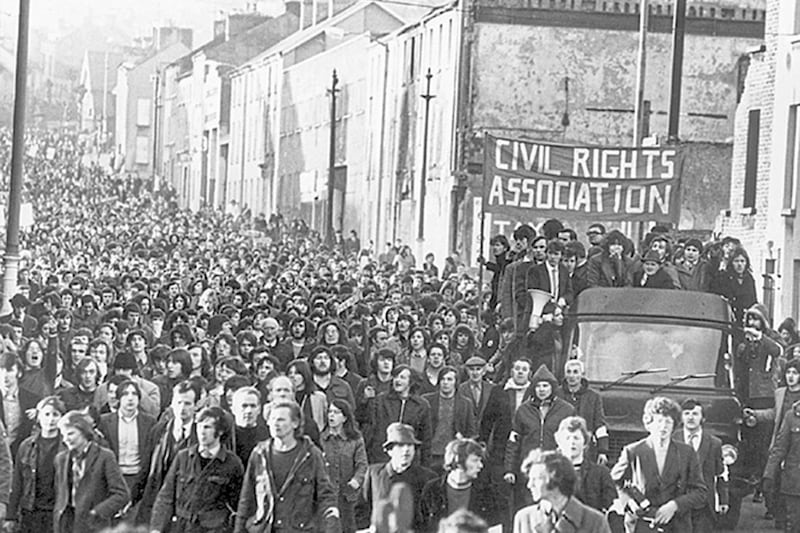A former British Army medic has claimed an officer suggested planting ammunition in the clothes of those wounded in the Ballymurphy shootings.
Nigel Mumford was attached to the Second Battalion of the Parachute Regiment during the shooting incidents involving soldiers in the west Belfast estate in August 1971.
Giving evidence to the inquests of the 10 people killed by gunfire, Mr Mumford also claimed the bereaved relatives now "just want money".
Speaking via videolink from an unknown location, he told Belfast Coroner's Court that an officer suggested planting bullets in the clothing of some of the wounded.
"I would not allow it," he said.
When asked why he did not report what happened, he said he did not want to negatively impact his career.
"It takes a brave man to go up against an officer in the British Army," he said.
The episode relatives call the "Ballymurphy massacre" started on August 9 and a new inquest at Belfast Coroner's Court is examining the deaths of the 10 civilians. An eleventh person died of a heart attack following a confrontation with soldiers.
Six were killed on August 9 including a Catholic priest and a mother of eight.
Mr Mumford disputed a witness statement given to the inquest by David Callaghan saying that he had been badly beaten by soldiers at a temporary army base at Henry Taggart Hall.
Mr Mumford told the inquest he recalled treating Mr Callaghan for a bullet wound on his arm, and insisted nobody attacked him in the hall.
"What you have heard is perjury from families that want money, no soldier touched that man," Mr Mumford said, to audible shock in the Belfast courtroom.
Claims that IRA gunmen were in the Ballymurphy area at the time have been disputed during the inquest hearings.
Mr Mumford told the inquest he saw IRA gunmen armed with Thompson submachine guns, Armalite rifles and pistols outside Henry Taggart Hall.
He said he was shot at as he cleared stones thrown at the front of the hall.
That task had been allocated to him as a punishment after he shouted: "Up the IRA, by the f***ing neck" at a crowd."
"The first gunfire started on me outside the Henry Taggart Hall. I could hear explosions and bullets going off everywhere, it was like Guy Fawkes Night," Mr Mumford said.
He also told the inquest he heard an officer give the order to soldiers to shoot to kill.
Earlier on Tuesday, Mr Mumford described seeing soldiers psychologically torture people they interned.
He said he saw internees with bags placed over their heads and their hands tied behind their back, and said they were made to believe they were going to be pushed off a table and hung.
"It was to put the fear of God into them," he said.
"No one was pulling their fingernails off, no one was cutting them, no one was putting bruises on them.
"No one was taking teeth out with pliers, it was slight physical but nothing 'torture, torture'."
Questioned by counsel for Coroner Siobhan Keegan about inconsistencies between accounts he gave in a book he wrote about his army service and videos he posted on You Tube, Mr Mumford told the inquest that after he wrote his book one of his notepads was "stolen by a frog" in Tahiti.
The inquest continues.
